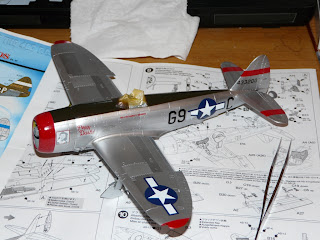To follow on from Airfix's latest kit release, I decided to purchase (and then review) some 1/72 decals from the Polish company Techmod that are suitable for the new kit.
The sheet comes with four options, all in the light grey/tan scheme that was so prominent during the early part of the Pacific War. Now the colours of these A6M2's has been a hot topic of debate between modellers for some years and I'm not about to wade in to the arguement here, especially as I am by far an expert in the matter. Techmod dodge the issue entirely by just giving the name as IJN Grey (Mitsubishi) and not giving an American FS colour callout, whereas the rest of the colours are given an FS number.
For those who are looking for information on painting of Zero's, there is a decent debate on Britmodller.com
(Japanese WW2 Colour debate) that provides many good links about paint chips and colours to use.
Now on to the sheet options:
1 - Pilot Tesuzo Iwamoto, Oppama Kokutai, Oppama Air Base, Japan, February 1943.
2 - Pilot Tetsuzo Iwamato, Carrier Zuikaku, strike on Pearl Harbour, 7th December 1941
3 - Pilot Tsugio Matsuyama, Carrier Hiryu, strike on Pearl Harbour, 7th Decemeber 1941
4 - Pilot Lt. Sumio Nono, Carrier Hiryu, strike on Pearl Harbour, 7th December 1941
The actual decals are neatly printed, thin and in register. There is no noticeble 'bleedthrough' of red around the white edges of the Hinomaro's so that is always nice to see. What is particularly nice with this sheet is the fine detail of the stencils, they are tiny but the Japanese text is legible (although I cannot vouch for the authenticity of the text as I cannot read Japanese). Techmod do provide stencils for both Mitsubishi and Nakajima built aircraft, which had some variations with the stencils so this attention to detail is comendable.
I have yet to use these decals but I have used Techmod before for some Spitfire markings. If these markings go on as well as those did, then they will be a pleasure to use. Highly Recommended!
EDIT: I realised whilst reading this over I totally forgot to put how much these decals cost, which is usually quite important for a review of a product! My apologies. I picked them up from Hannants.co.uk for £4.70. This is a very respectable price for 4 options, full stenciling for one aircraft (either Nakajima or Mitsubishi built) and decent colour instructions for placement. I stand by my original assessment, this is a great little set of decals.

















































